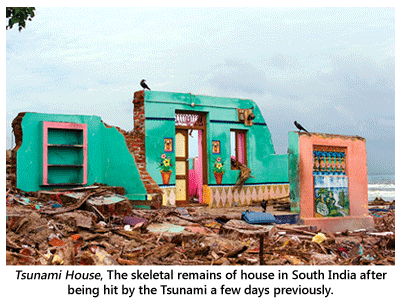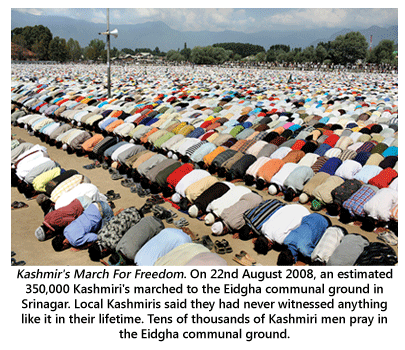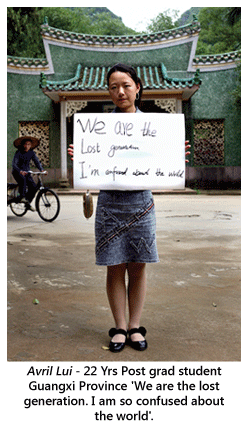- Prelude
- Editorial
- Raghu Rai: The Historian
- Ryan Lobo, 34 in Baghdad
- Through the Eye of a Lensman
- Adrian Fisk
- And Quiet Flows the River
- The Lady in the Rough Crowd: Archiving India with Homai Vyarawalla
- Raja Deen Dayal:: Glimpses into his Life and Work
- Raja Deen Dayal (1844-1905) Background
- Vintage Views of India by Bourne & Shepherd
- The Outsiders
- Kenduli Baul Mela, 2008
- Collecting Photography in an International Context
- Critical Perspectives on Photograph(y)
- The Alkazi Collection of Photography: Archiving and Exhibiting Visual Histories
- Looking Back at Tasveer's Fifth Season
- Kodachrome: A Photography Icon
- Three Dreams or Three Nations? 150 Years of Photography in India, Pakistan and Bangladesh
- Show And Tell – Exploring Contemporary Photographic Practice through PIX
- Vintage Cameras
- Photo Synthesis
- The Right Way to Invest
- What Happened and What's Forthcoming
- Art Events Kolkata: March – April 2011
- Art Bengaluru
- Mumbai Art Sighting
- North East Opsis
- Previews
- In the News
- Somnath Hore
ART news & views
Adrian Fisk
Volume: 3 Issue No: 16 Month: 5 Year: 2011
A Conversation between Shruti Ponnappa and Adrian Fisk
Adrian Fisk grew up in Devon, south west of England in 1970. He now lives and works in New Delhi, India. Beginning somewhere in the early 90's, Adrian Fisk's photography traverses two decades of a fascinating reflection on the paradoxical overlaps between the realities of urban living and the iconographies of everyday street life. Themes of political, social and  cultural identity run through his works, creating extraordinary visual metaphors of a society that is an unstable product of vitriolic growth that takes place in cities.
cultural identity run through his works, creating extraordinary visual metaphors of a society that is an unstable product of vitriolic growth that takes place in cities.
His work 'Its Pants in Walthamstow', which is in the permanent collection of the London Museum, is also part of the ongoing exhibition there, chronicling the evolution of street photography in London from the early 19th Century to the present. His ironic yet incisive visual analysis of South Asia in its unique period of growth, have been featured in The Economist, The Financial Times and the National Geographic Magazine.
He speaks of his journey as a photographer and one of his most conceptual artistic endeavours to date- iSpeak India and China.
SP: You started as a documentary photographer which was followed by radical street photography. While the interest in going back to the margins of society has not shifted, the kind of photography and the subjects are different. Tell me about your journey.
AF: One of my first professional works was about the environmental movement or the direct action protest movement- people putting themselves in a situation to highlight a cause. In this case, road protestors began living on trees around a proposed route to be built, making it hard for the government to go ahead with the building. That was followed by the illegal raves, which was a similar movement in the form of a 'Do it Yourself' alternative sub-culture. This led to some work on anti globalisation. From the mid-90's to early 2000, the theme that dominated my work was the documentation of British counter culture.

Then came the millennium, when I started to do stories in India like the human hair trade and dowry abuse. In 2003, I came back again for a story about how India was changing by photographing the old clichéd theme of disappearing snake charmers. This time I never went back to England. My work currently focuses on the extraordinary socio-economic growth story in South Asia (predominantly India) and China and the socio-anthropological changes resulting from that.
SP: Iconic images like 'Its Pants in Walthamstow' do not come very often. It juxtaposes humour and irony in an interesting way. Is it a digital image? How did it happen?
AF: That shot was taken on a small compact film camera: the Yashica T5, which used to remain in my pocket at all times. That picture is a very good example of not going looking for a shot. I remember that day so clearly in my mind - I was walking down the street really fast and that frame caught the corner of my eye. I spontaneously shot two pictures out of it. This is obviously a very different approach to other kinds of photography. I started to shoot digital only around the end of 2004.
SP: Tell me about the conceptualisation and making of iSpeak
AF: I was at a point where I realised that I was finding my niche in conceptual photography as opposed to my earlier commitment to reportage. Following the phenomenal growth story in India and China- the motivation for iSpeak came from the realisation that the world's future was in the hands of the 'young' in these nations. Statistically, these countries account for 1.2 billion people in that category, which is one fifth of the planet. Therefore in order to understand where we are heading as a global society, we must look towards the youth of these two countries and see what they think about life. That is how I came upon the idea of them writing on signboards. The paper is blank so people can write about whatever they want to - not just economic or socio-cultural issues.
In China I travelled 12,000 kilometres averaging about 400kms per day and that was covered mainly by train, taxies, motorbikes, horse and foot. I interviewed a cross section of farmers, businessmen, call centre employees, students, school drop outs and executives randomly, meeting them in train stations, cafes and the streets. It is an alien concept in Asia to ask people to talk unabashedly about their innermost thoughts and it did involve working through the layers before they articulated their thoughts freely.
Along with the growth, there has been a revolution at multiple levels with regard to technology and photography, resultantly iSpeak China is now seen by an estimated 11 million people! To achieve this with traditional publishing and exhibitions alone would have been difficult.
SP: iSpeak marks a distinct crossover in your photography, from public activism to the use of theatre; gentle irony to an explicit avant-garde protest gesture. What changed?
AF: My work has always been 'political' from the outset. The first work I ever did was build a tree house and live on a tree, in order to document road protestors. Even my street photography, perhaps not so much my Indian street photography, but my British ones were political as well and it dealt with the issues of isolation, loneliness and homelessness.
SP: How do you distinguish yourself from an amateur photographer who can perhaps create an iSpeak by the click of the camera?
I am a huge fan of 'gonzo' journalism. The difference is the quality and concept. However that does not mean all professional photographers can lay claim to better photography. It is increasingly hard now to tell the difference. But there are traditional ways like being published in a professional magazine or portal. What I am really saying is that the line is blurred and that is the fundamental difference between photography ten years ago and now. This is obviously making a lot of photographers nervous, who are therefore pushing the boundaries of their work. It has completely altered the landscape. Really, to come across good photography by amateurs or professionals today is very difficult.
SP: When does photography become art to you?
AF: That is a question no one I suppose,  will be able to answer distinctly. Photography as art is such a subjective perception. We really have to ask ourselves - what is art? In the context of photography, what is the documentation of a real event- it is all grey lines. I guess it becomes art when it transcends from the 'literal' to the 'conceptual', where you are reflecting a reality and also going beyond that reality. My photograph ' Tsunami House' is an example.
will be able to answer distinctly. Photography as art is such a subjective perception. We really have to ask ourselves - what is art? In the context of photography, what is the documentation of a real event- it is all grey lines. I guess it becomes art when it transcends from the 'literal' to the 'conceptual', where you are reflecting a reality and also going beyond that reality. My photograph ' Tsunami House' is an example.
This photograph was taken on New Years morning a few days after the Asian Tsunami hit India. It is an image intended to work both literally and conceptually in what it communicates. It is a documentary image showing us the terrible devastation, a land wrecked by a disaster that killed 273,000. However, more profoundly this image goes beyond a simple depiction of nature's violence. It is intended as a visual metaphor for life in its depiction of life and death, and the inescapable reality that we will all die one day, only for life to continue as it has done for millions of years. The crows that mock from different points in the image are carrions of death surrounded by a raped landscape in close proximity. But within the house we see new life as the painted pots come to life against a wall of vibrant colour. This image has also been influenced by my time in India and my exposure to Hinduism. It is a reference to the Hindu belief in Samsara, the painful cycle of repeated birth and death.
SP: Your photographs have been published by the National Geographic magazine. How do you react to the controversies of deliberate exoticism and overplay of marginalization?
AF: You have to be very careful not to represent an altered exotic reality yet also at the same time you want people to look at the magazine. Exoticism sells - however clichéd that might be. If it is a reality and as long as you are projecting that reality, the dark room techniques that are applied to make something darker or lighter should not really matter. If we take a country like India, it is a relevant issue. I try to avoid taking the route of clichéd exoticism barring my very early story of the disappearance of the snake charmers, which was deliberately done. People who missed the irony of that work accused me of resorting to exoticism. I have been very careful since.
SP: What do you feel about the future of photography in the contemporary art space?
AF: Photography has constantly tried to push itself into the art market space and has encountered its share problems.  I think one of the problems is that we reproduce a photograph so often that it ceases to be an 'original' or exclusive work of art. The other problem with photography is that anyone can do it. There is a sense of “I could have taken that picture” which psychologically devalues the work. However, increasingly photography as art is finding its place and is being taken seriously. In India it is very exciting as people are more predisposed to buying photographic works as art. I have sold to quite a few interesting collectors here and I have not commanded those prices even in Britain. I feel this definitely marks a shift and I feel excited and optimistic about the future of us photographers.
I think one of the problems is that we reproduce a photograph so often that it ceases to be an 'original' or exclusive work of art. The other problem with photography is that anyone can do it. There is a sense of “I could have taken that picture” which psychologically devalues the work. However, increasingly photography as art is finding its place and is being taken seriously. In India it is very exciting as people are more predisposed to buying photographic works as art. I have sold to quite a few interesting collectors here and I have not commanded those prices even in Britain. I feel this definitely marks a shift and I feel excited and optimistic about the future of us photographers.
SP: What are you working on now? Do you plan to document iSpeak further?
I have just finished an exhibition of my work ' Delhi Puraani, Delhi Nayaa' which is an intimate autobiographical portrayal of my relationship with Delhi as well as of a city going through great change.
At the moment my whole world is about iSpeak. I am in the final stages of a very comprehensive proposal that aims to raise money to make iSpeak Global. A trip around the world shooting about 20 countries which are economically, politically, culturally and environmentally relevant in the 21st Century. To go out and document what the young of the world are thinking at a pivotal point in the history of humanity.
---------------------------------------------------------------------------------------------------------------------------------------
iSpeak is a series of unconventional photographs, where the artist travels through the cross geographies of India and China, documenting the voices of the youth of these nations.
Shruti Ponnappa is a Masters student at the Sotheby's Institute of Art, London. She is also authoring her first book- a historic fiction set against the postcolonial backdrop of her birthplace, Coorg, in South India.
Images Courtesy: Adrian Fisk